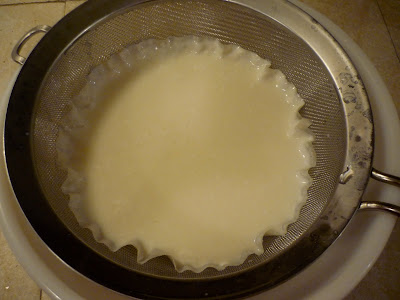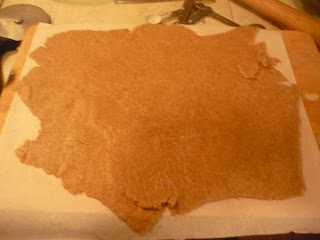Last night, John was doing the dishes (have I mentioned how amazing my husband is?), when he called out to me that we needed to buy some Drain-o to fix our sluggish drain. I HATE having chemical cleaners in the house, and I remembered reading somewhere that there was a homemade alternative.
Imagine my surprise when, site after site gave the exact same remedy:
Dump about a cup of baking soda down the drain. Follow it with about a cup of vinegar. Let it sit for about 30 minutes, then flush the drain with a couple of cups of boiling water. That's it.
For a simply sluggish drain like ours, it worked perfectly. I've read that for a completely stopped up drain, you should double the amounts of both baking soda and vinegar.
I was so excited to share this with you. I'd also like to share a bunch of other uses that I've found for baking soda and vinegar:
- baking soda works as a fruit and vegetable wash. Just sprinkle a little on a clean damp sponge, scrub and rinse.
- vinegar works as a fabric softener - add about 1/8 of a cup in the rinse cycle, or use a downy ball (don't do this if you are using bleach)
- Use baking soda on a damp sponge to clean and deodorize kitchen and bathroom surfaces
- a solution of equal parts water and vinegar is a great window cleaner. Just mix in a spray bottle and use just like windex
- To clean your microwave, boil a mixture of 1/4 cup vinegar and 1 cup water. The steam will loosen bits of splattered food
- To clean a burnt pan, sprinkle baking soda on the bottom of the pan, then add enough water to cover the bottom. Let sit 30 minutes, then scrub
- You can use baking soda as a replacement for toothpaste (I haven't tried this one yet, but I thought I'd throw it out there)
- relieve bug bite itch and sunburn pain by making a paste with baking soda and water
- use baking soda as a carpet deodorizer - sprinkle it on your carpet and vacuum up
- add a 1/4 cup baking soda and 1 cup of vinegar to your toilet. Let sit 30 minutes, then scrub with a brush and flush
- remove (crayon) marks from the walls by sprinkling baking soda on a damp sponge and scrub



















































